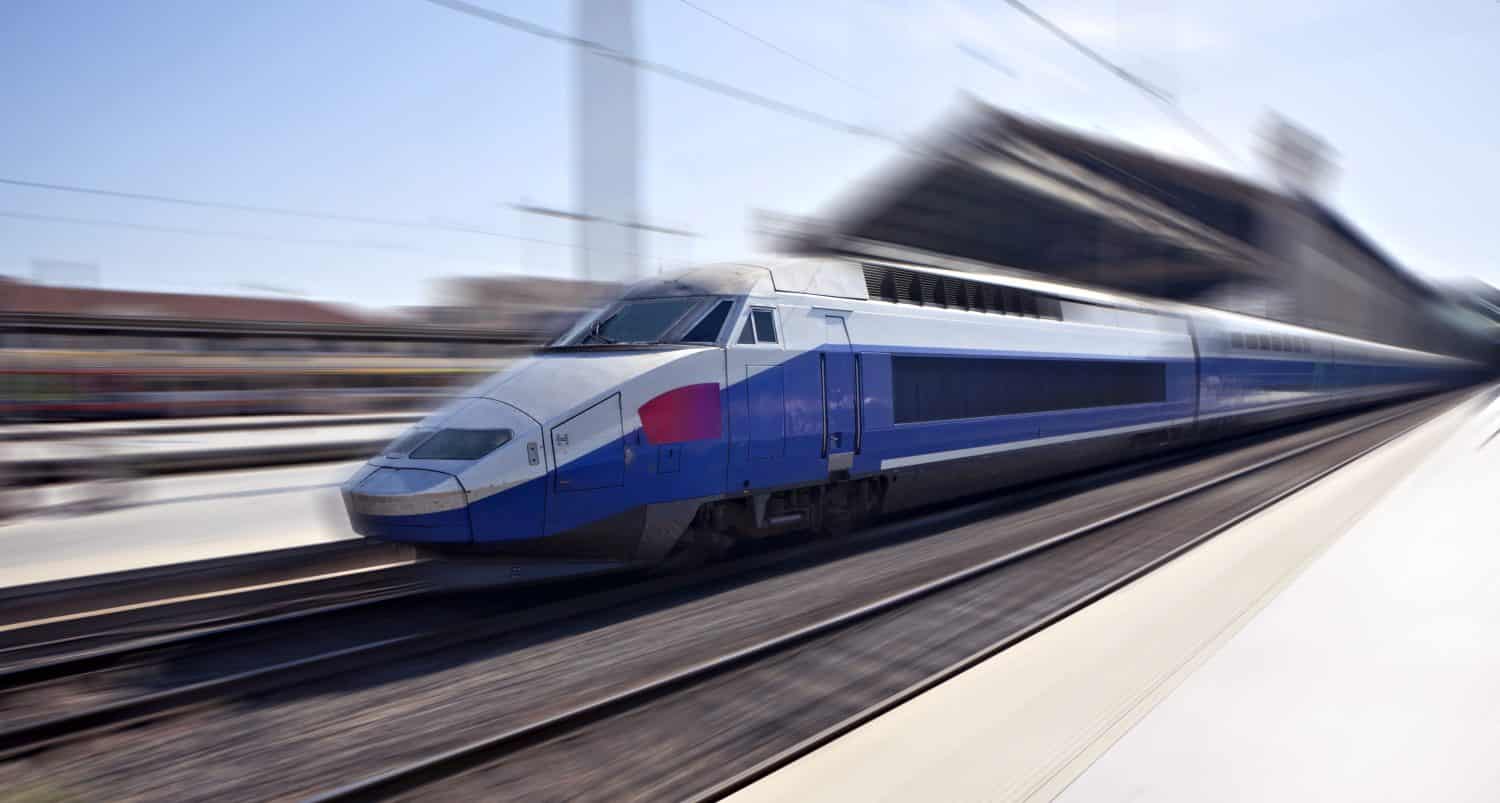Trains are an invention of the Industrial Revolution. From the beginning, trains served the purpose of shipping goods from one place to another and ensuring travel for people from one place to another. As time has gone by, the technology for rail has grown substantially. Now, some trains can go extremely fast. Since Europe is a rail-heavy continent where train travel is popular, there are trains in several countries that go at fantastic speeds. Let’s take a look at the 10 fastest trains in Europe.
10. RZD Sapsan
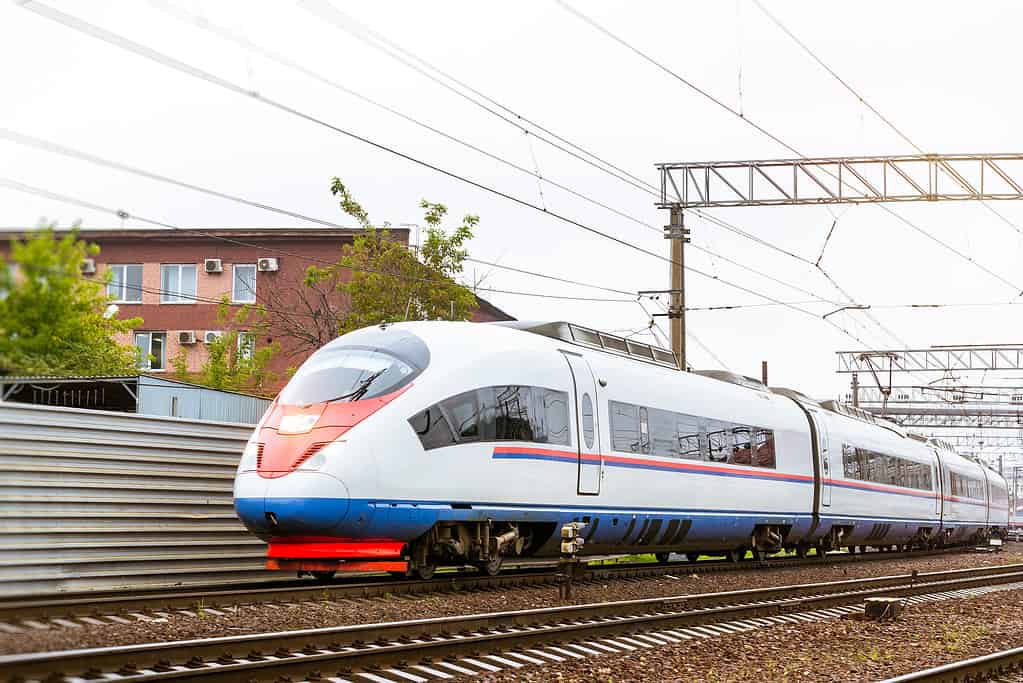
The train runs in Russia at a speed of 250 kilometers per hour.
©chasdesign/iStock via Getty Images
The Sapsan train runs at an operational speed of 250 kilometers (155 miles) per hour, which means it is the fastest train in Russia. The train, however, can run at a maximum speed of 290 kilometers (180 miles) per hour. The trains run from Moscow to Saint Petersburg, Moscow to Nizhny Novgorod, and Saint Petersburg to Nizhny Novgorod. The passenger trains can accommodate 600 people in 10 cars.
9. SBB RABe 501
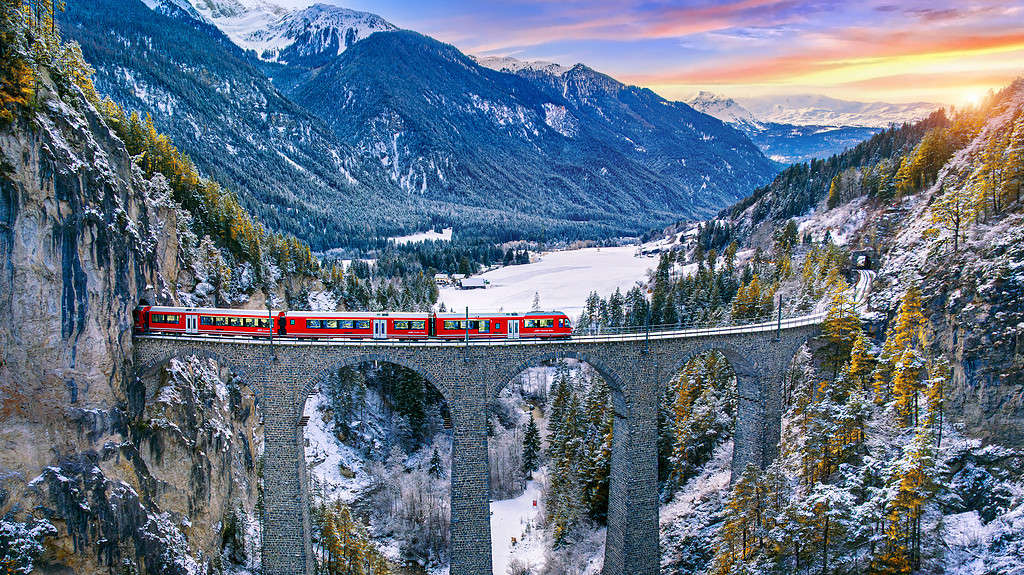
The train runs in Switzerland at a speed of 250 kilometers per hour.
©tawatchaiprakobkit/iStock via Getty Images
Operated by Swiss Federal Railways, the RABe 501 is also known as the Giruno. The train goes from Milan to Basel and Milan to Zurich. These passenger trains can accommodate 403 passengers in 11 cars. They operate at a whopping 250 km (155 miles) per hour, but only 200 km (124 miles) per hour inside Switzerland. The train runs along the Gotthard Base Tunnel, which is the longest rail tunnel in the world.
8. Renfe Pendolino
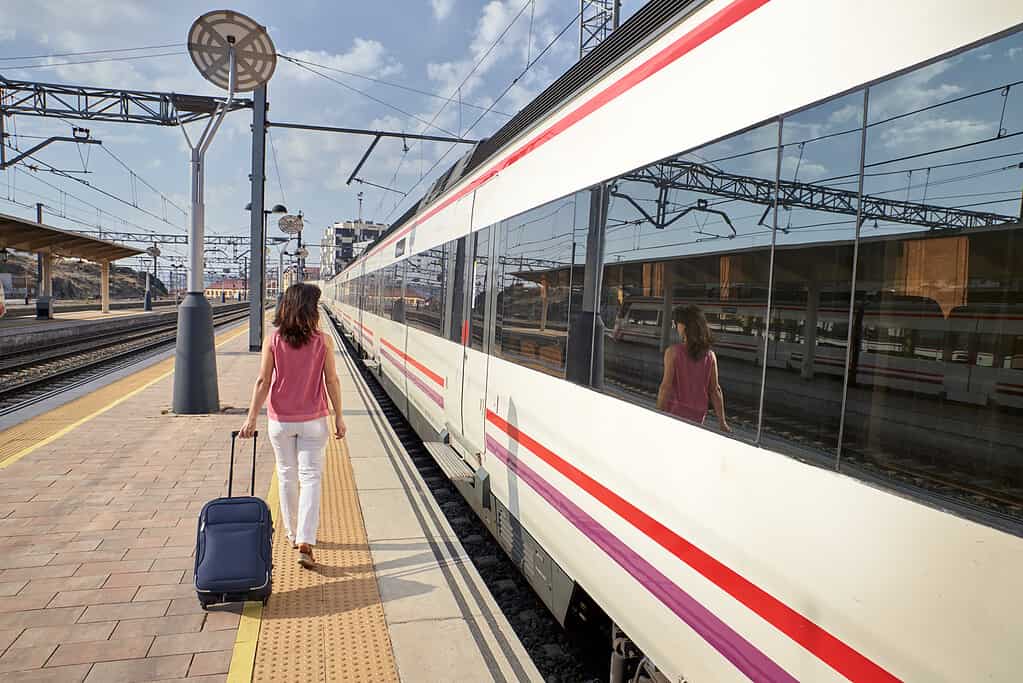
The train runs in Spain at a speed of 250 kilometers per hour.
©LuismiCSS/iStock via Getty Images
Operated by Renfe, the Spanish railway company, these trains run from Madrid to Valladolid, through Segovia, Madrid to Puertollano, and Barcelona to Lérida. These passenger trains are mid-distance trains and therefore run at a slower speed than other Spanish high-speed trains.
7. Renfe Talgo 250

The train runs in Spain at a speed of 250 kilometers per hour.
©ABBPhoto/iStock via Getty Images
Another Spanish train, these trains also operate at a speed similar to the Pendolinos. Nicknamed “Patitos” because of their duck shape, they accommodate 265 passengers in 13 cars. The Renfe Talgo trains operate from the Spanish capital of Madrid to a number of cities including A Coruña, Badajoz, Ferrol, Lugo, and Pontevedra.
6. Eurostar Velaro

The train runs in France, Belgium, the Netherlands, and the UK at a speed of 300 kilometers per hour.
©Main_sail/iStock via Getty Images
Officially called the British Rail Class 374, the Eurostar are the famous trains that traverse through the tunnel that crosses the English Channel. They are comprised of 16 cars that accommodate a whopping 900 passengers. The trains service passengers from London to European cities like Paris, Brussels, and Amsterdam.
5. Italo AGV
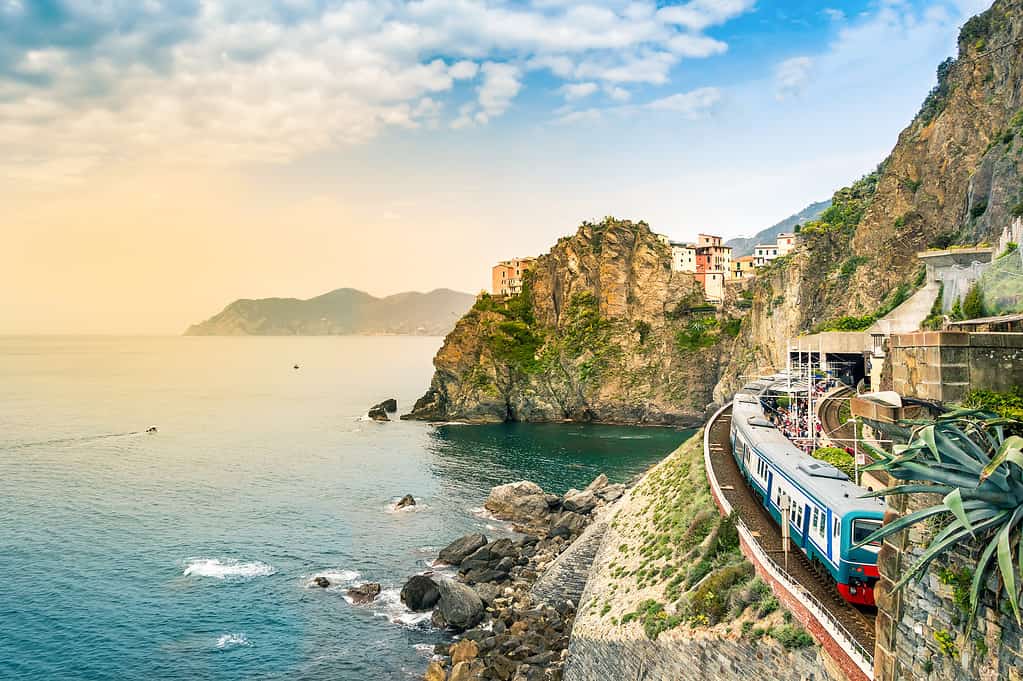
The train runs in Italy at a speed of 300 kilometers per hour.
©Julia Lavrinenko/iStock via Getty Images
Although it can go up to a whopping 360 kilometers (223 miles) per hour, it usually runs at 300 kilometers (186 miles) per hour. There are many routes where this train operates in Italy. Usually, routes include Turin to Milan, Rome to Venice, and Bologna to Florence, Rome, and Naples. There are 11 cars on these trains and carry more passengers than other Italian train cars.
4. Trenitalia Frecciarossa

The train runs in Italy at a speed of 310 kilometers per hour.
©zefart/iStock via Getty Images
Operated by the Italian state railway company, Trenitalia trains usually have eight cars and can accommodate a total of 457 passengers. These trains usually run at 310 kilometers (192 miles) per hour, but the maximum speed it can go is 400 kilometers (248 miles) per hour. The Trenitalia trains operate all over Italy.
3. Renfe AVE

The train runs in Spain at a speed of 310 kilometers per hour.
©PPrat/iStock via Getty Images
Another Spanish train on the list, these trains are also operated by Renfe. The AVE trains are high-speed and can go up to 403 kilometers (250 miles) per hour, although they usually run at speeds of 310 kilometers (192 miles) per hour. These high-speed trains have eight cars and can accommodate 400 passengers. The AVE trains have routes all over Spain.
2. SNCF TGV
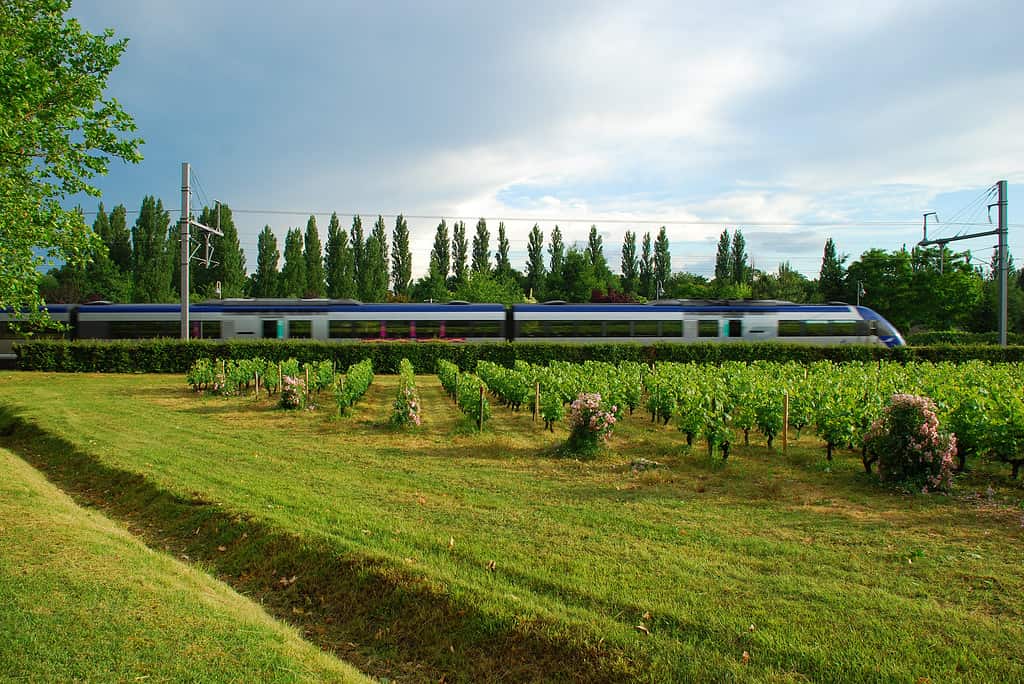
The train runs in France at a speed of 320 kilometers per hour.
©Foto_by_M/iStock via Getty Images
Operated by the French railway company SNCF, the TGV (called the Train à Grande Vitesse) operates throughout France. They are considered one of the fastest trains in the world. The railway company also ordered 100 new trains coming out in 2024 that can operate at speeds of up to 350 kilometers (217 miles) per hour. They are also adding new routes to Barcelona from Paris.
1. Deutsche Bahn ICE
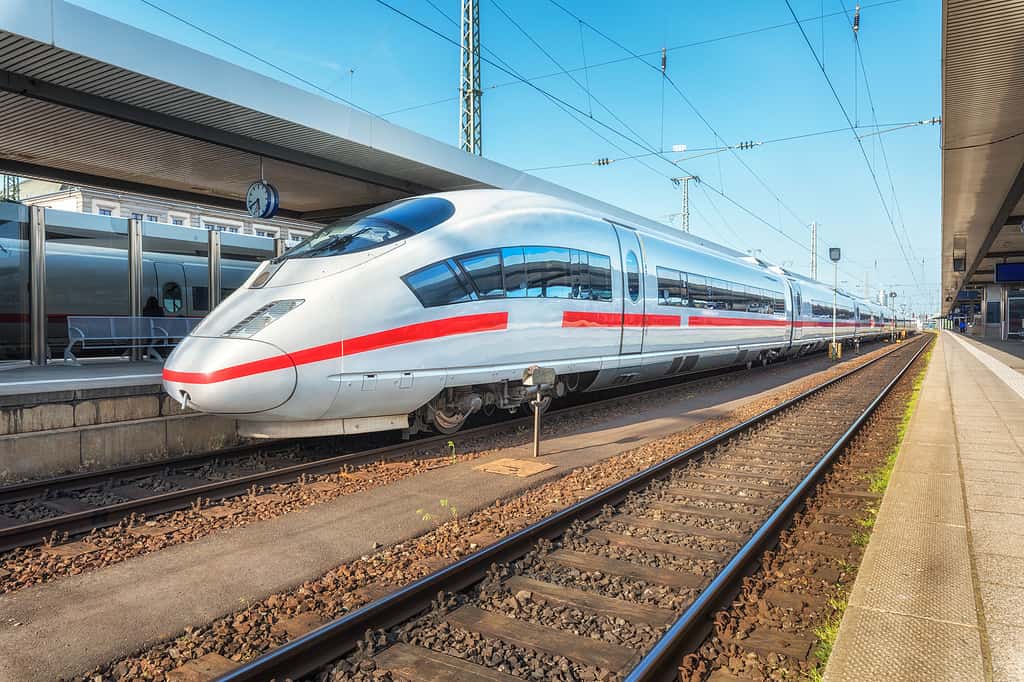
The train runs in Germany at a speed of 350 kilometers per hour.
©den-belitsky/iStock via Getty Images
The German railway company operates the ICE (Intercity-Express) trains, though they are also operated by Nederlandse Spoorwagen, the Dutch railway company. The ICE trains usually operate at 320 kilometers (198 miles) per hour on routes all over Germany. However, the train route from Frankfurt and Cologne can go up to a whopping 330 kilometers (205 miles) per hour.
Thank you for reading! Have some feedback for us? Contact the AZ Animals editorial team.

